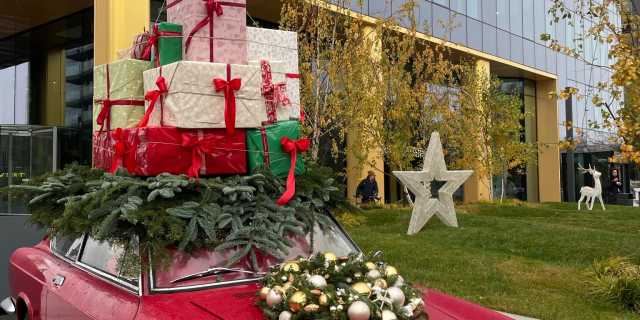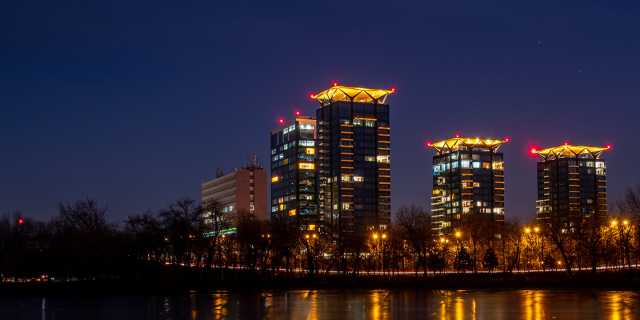The history of the Braikoff house dates back to the 19th century and is closely linked to the life of the Dutch industrialist Jean Braikoff. In 1881, he bought from Maria Slătineanu, for 30,000 lei, the land in Episcopiei Square, on which he would build the famous house. The final project was entrusted to the Swiss architect Elisée Berthet, who followed a similar line to the sketches previously made by the architect Henri de Wurmb, but left his mark through a remarkable dome that completes the design of the building.
The project was greenlit in the spring of 1891, when the owner received the building permit to develop, at number 2, a house with a basement, ground floor, two floors, and an attic. The plan of the building was designed in the shape of the letter V, with one side on Episcopiei Street and another on Corabia Street (now called Georges Clemenceau). A similar shape is found in another monument of the Capital – the Central University Library, designed by the architect Paul Gottereau, who apparently lived in the vicinity of the Braikoff house.
The building housed many members of the entrepreneur’s family – who kept for himself one of the flagship rooms, a circular, very spacious one –, and a Jewish tenant named Weiser. The gas from the Filaret plant, today a historical monument, was used to illuminate the house.
To decorate the exterior, the initial plans included a series of decorations with busts, classic vessels, and natural elements, some of which deteriorated over time as a result of earthquakes, the 1989 fire, and the various works carried out. In parallel with the exterior decorations, a special emphasis was placed on beautifying the apartments, by painting the ceilings in different scenes, including elements of nature (butterflies, birds) and spirituality (angels), with a rosette as a central point, but also by decorating them with the help of stucco compartments. After 1957, a series of alterations were made to the original painting.
Over the years, the Braikoff House has served as the headquarters for several institutions, starting with the Ministry of Justice, which operated here between 1893 and 1899, before the completion of its building, located on Dâmbovița Quay. For the damages incurred during this time, the state paid Jean Braikoff the amount of 13,600 lei, representing compensations.
In 1900, a year before his death, the entrepreneur donated the house to his wife, Maria. Two and a half decades later, his sons, Jean Victor and Teodor, would sell the house. Along the way, the Royalty Company and various representatives of some airlines, but also of some oil institutions will operate here. Later, following the earthquake of ’77, with the help of some state investments, the Fashion House, part of the Ministry of Light Industry, will be born inside the building.
To restore its former glory in a contemporary note, adapted to the present, but also to contribute to the regeneration of the cultural heritage of the Capital, the developer One United Properties took over the historic building with an area of 2,240 square meters, renaming it One Athénée because of its proximity to the Romanian Athenaeum, one of the most beautiful buildings in Bucharest. With the completion of the restoration works, an exclusive shopping centre will be arranged in the building, as well as a series of premium apartments, which will benefit, beside the luxurious finishes, from a view of the Athenaeum building.
Data for this article was obtained from adevărul.ro, zf.ro și economica.net.
More on our blog
- One Insider
- Real estate: past, present and future
- Layout and style
- Real estate education
- Free time in Bucharest
- Tourist attractions in Bucharest
- The neighborhoods of Bucharest
Read also






